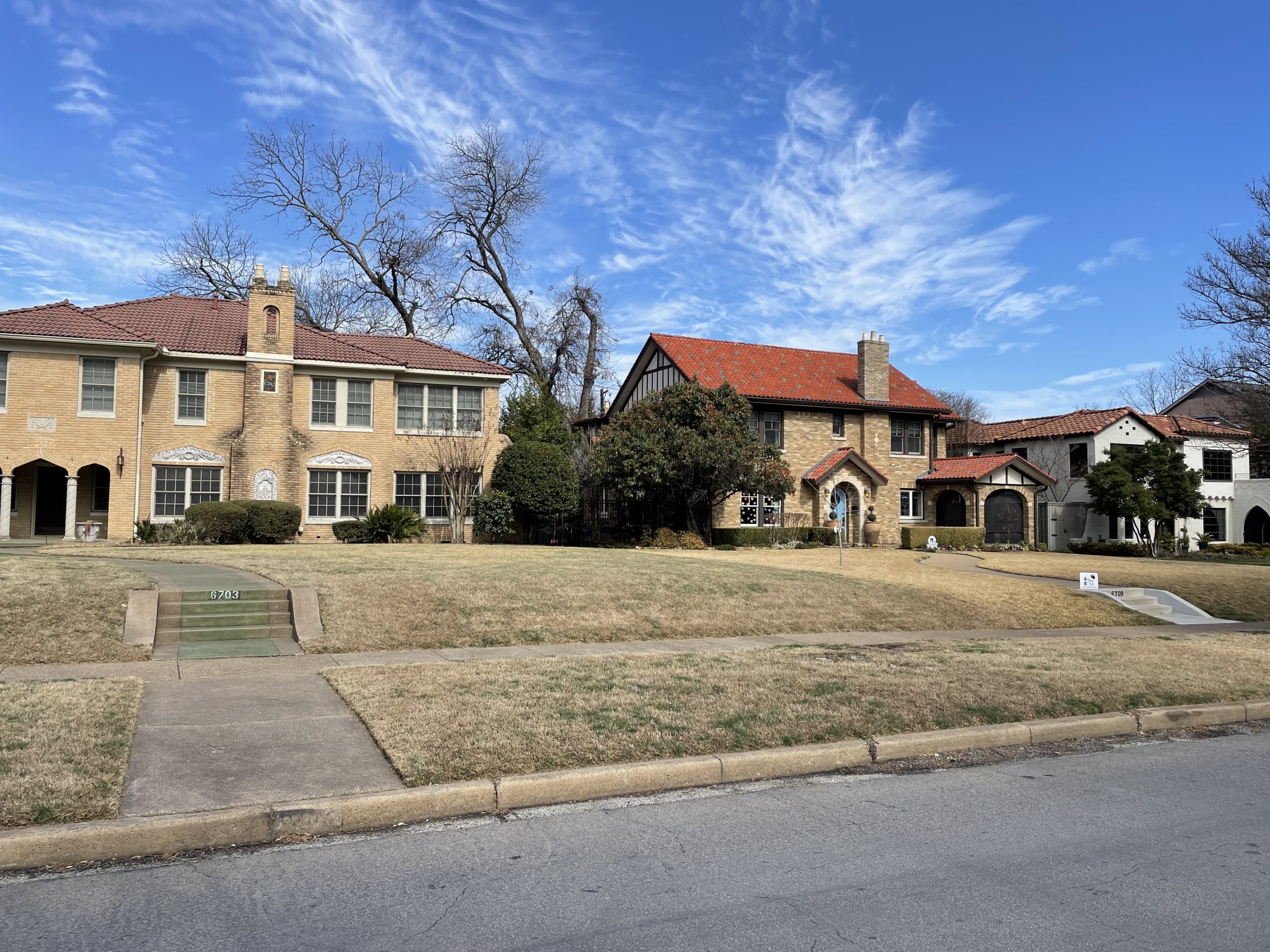
Homes along Lakewood Boulevard in the existing CD No. 2. Photo by Renee Umsted.
With discussion of regulations for architectural styles in its second week, Lakewood neighbors in the proposed conservation district expansion area started considering demolition.
Conservation districts vary in how they regulate tear-downs. One idea suggested at the most recent Lakewood Conservation District expansion meeting, held Dec. 14, was that a home could only be demolished if the cost to repair it is greater than 80% of the value of the home.
Lakewood neighbors who attended the meeting wanted to protect from demolition historically significant homes as well as a few key styles, including Tudor, French Eclectic, Spanish Eclectic, Colonial Revival and Neoclassical. Other significant homes would include those designed by notable architects, namely Charles Dilbeck, Clifford Hutsell, and Dines and Kraft.
Those core styles came from a discussion about contributing and non-contributing styles. Also wrapped into that discussion was mention of other terms, such as “significant” or “original,” to further define under which circumstances homes can be demolished, remodeled or built new.
“Significant” or “original” homes might include those that weren’t necessarily built by a notable architect but exhibit styles neighbors want to conserve.
Contributing styles will be regulated and permitted for new construction projects. A majority of neighbors at the meeting seemed to agree that there should be more styles allowed for remodels, compared to styles allowed for new construction.
According to the determination of eligibility, which the neighborhood committee submitted to Planning and Urban Design at the beginning of the expansion process, there are 89 Tudor homes, 54 Spanish Eclectic, 14 French Eclectic, 11 Minimal Traditional, five Neoclassical and 26 Colonial Revival in the expansion area. The remaining 76 homes were listed as non-contributing. Ranch, Monterey, Mid-century Modern and Contemporary styles are included among those non-contributing homes.
There was also discussion about whether a home of a certain architectural style that is torn down should be rebuilt in the same style. For example, if a Tudor is demolished, there could be a requirement that a Tudor has to be rebuilt. This kind of stipulation is in the ordinance for East Dallas’ Belmont Addition Conservation District, which requires that if an original or contributing Craftsman house is torn down, the front facade and wrap-around of the new home on the same lot must also be built in the Craftsman style.
But for other home styles, such as minimal traditional, neighbors may not want to dictate that a minimal traditional home has to replace it; rather, they may agree that a different style, such as Tudor or Spanish Eclectic, should replace it.
Regulations of contributing architectural styles could include language that requires remodels to use brick and stone that matches the color, coursing, joint detailing, mortaring, size and texture of what was previously there.
In response, neighbors commented that some materials may be difficult to find, especially in the right quantities.
Discussion of architectural styles will continue in coming meetings. The next scheduled meeting is Jan. 4, 2023, at 6 p.m. at Samuell-Grand Recreation Center.
Review previous meeting presentations and recordings here. To share comments regarding regulations of architectural styles or demolition, email Trevor Brown at trevor.brown@dallas.gov. Include “LWCD Expansion” and your address in the subject line.





